The Vietnam War was one of the deadliest armed conflicts in US history.
In large part, this is due to the guerilla tactics used by Viet Cong and North Vietnamese.
However, we also shouldn’t underestimate the role of the rapid weapons manufacturing going on during that time, creating more and more advanced weapons systems.
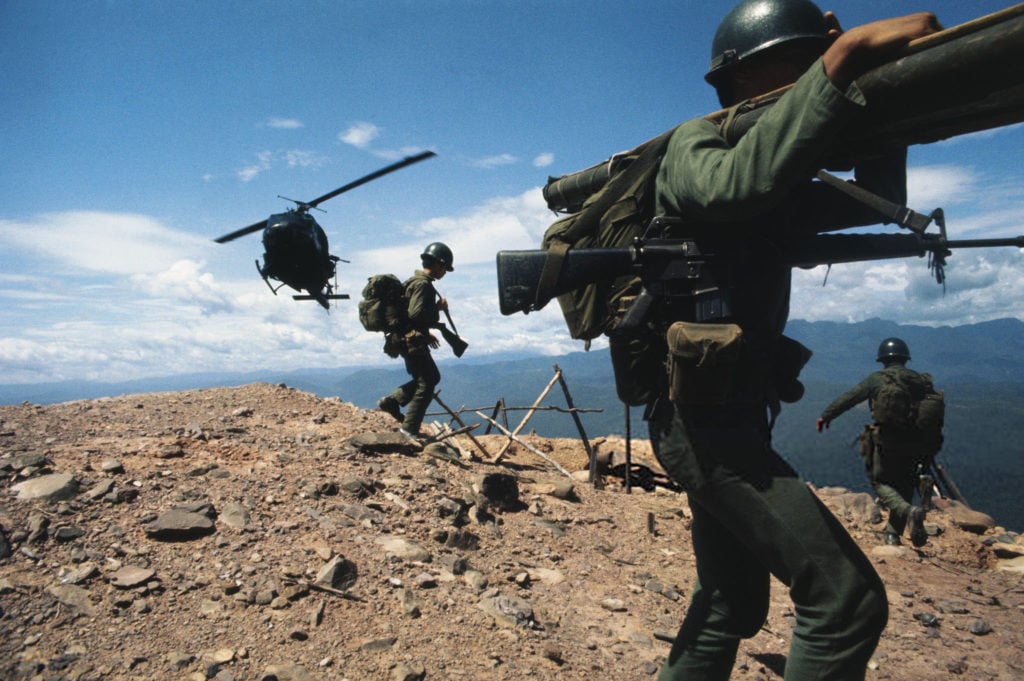
Today, we’re going to talk about some of those weapons systems, in particular the firearms.
We’re primarily going to talk about the weapons used by the United States. This is for two reasons:
First, as an American writer writing for a primarily American audience, these are the weapons we’re all more familiar with.
Second, the militia nature of the Viet Cong and North Vietnamese meant that they didn’t have the same uniformity of equipment as the formal US military.
Therefore, there aren’t as many weapons that stand out as particularly prominent as with the US side.
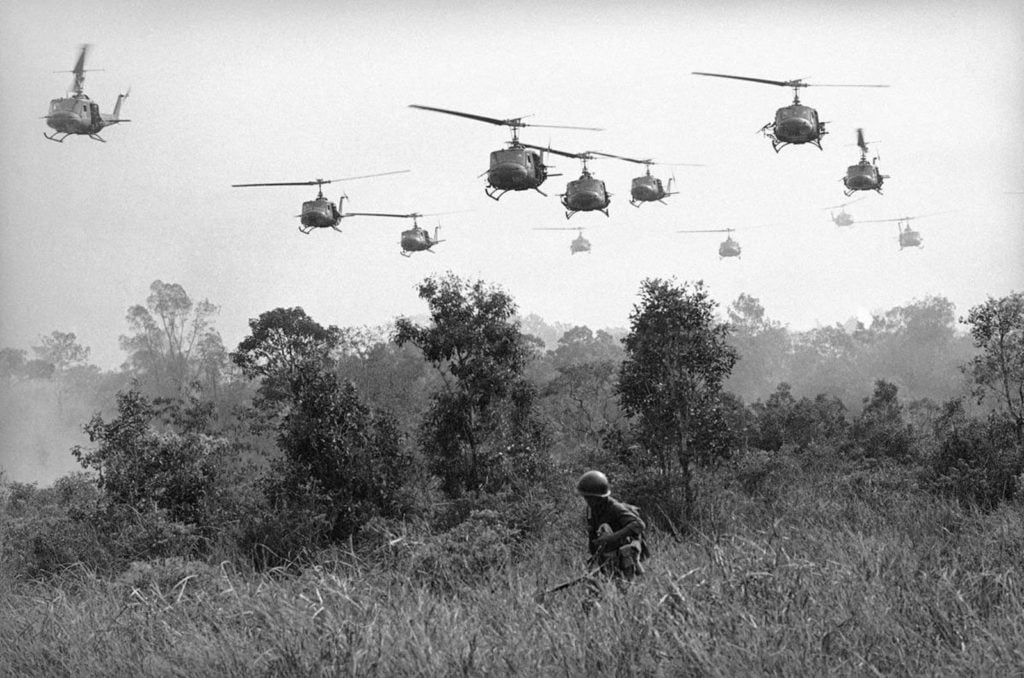
In addition, many of the weapons used by the US and our allies in Vietnam were also used by the North Vietnamese, who would capture the weapons along with other equipment from the opposing troops.
Most Important Guns of the Vietnam War
1. AK-47
So to make up for the lack of specifically North Vietnamese weapons on this list, let’s start with one.
North Vietnamese troops may not have had the same uniformity as the US and our allies, but they did have support from China and the Soviet Union, both of whom provided the North Vietnamese with weapons.
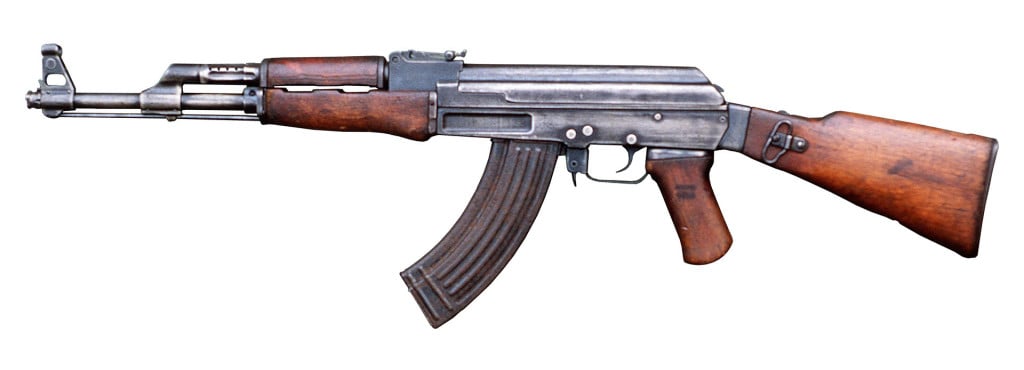
One such weapon was the AK-47.
Chambered in 7.62x39mm, the AK-47 was particularly common after 1967, when all Viet Cong battalions were equipped with AK-47s manufactured by both the Chinese and the Soviets. Before this point, infantry rifles were much more varied.
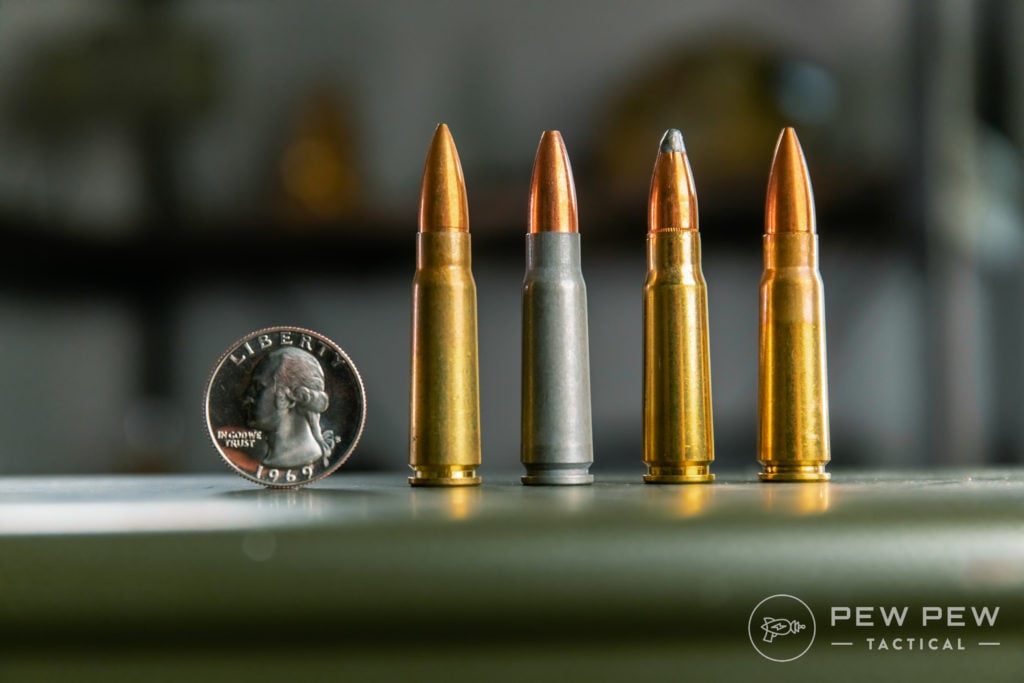
So why the AK-47? Well, the Soviets and their allies were already mass producing the AK-47 and had a vested interest in supporting other Communist actors.
It’s cheap to manufacture on a large scale and very easy to use, making training soldiers quick and simple.
It’s also highly reliable with a minimum of preventive maintenance and cleaning.
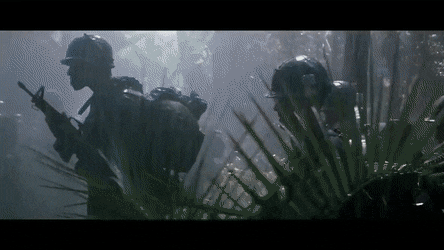
A trait that was especially important in the wet, muddy conditions of Vietnam when being used by fighters who were not professional soldiers.
Check out our Best AK-47s (You Can Still Buy).
2. M14
Early in the war, the opposite side was using the M14.
The M14 became the US military’s standard-issue rifle in 1959. It was intended to replace several different auto and semi-auto rifles that the US military had been using.
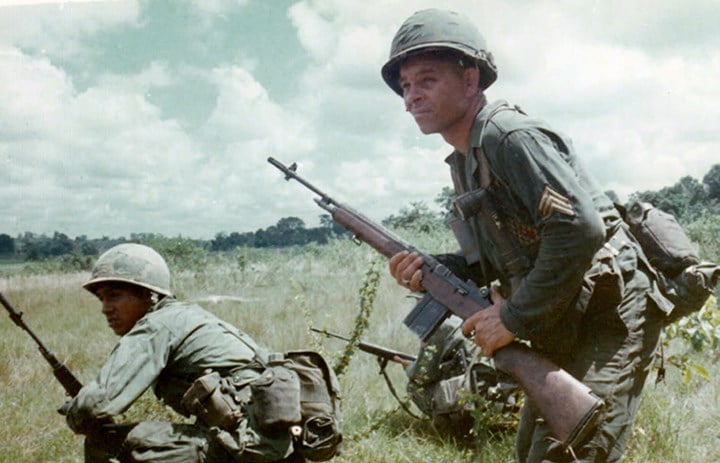
However, it wouldn’t get many years of service before being replaced itself.
For one, it was too large to be easy to carry through the thick Vietnamese foliage.
In addition, while the gun’s 7.62 NATO rounds were powerful and offered excellent range, their size limited the amount of ammo that soldiers were able carry.
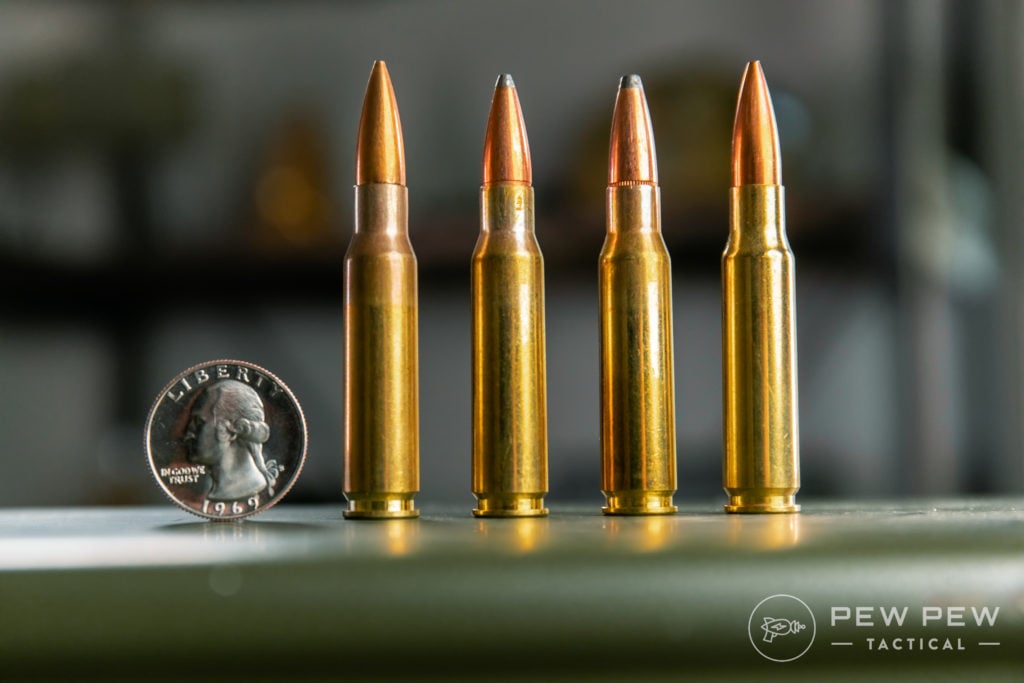
Furthermore, the power of the cartridge and the design of the rifle meant that the M14 was completely unmanageable when used in full-auto mode.
As a result, when the M14 came up against the AK-47 in firefights, shooters had to choose between a lack of precision or a low rate of fire, and they ran out of ammo well before their opponents.
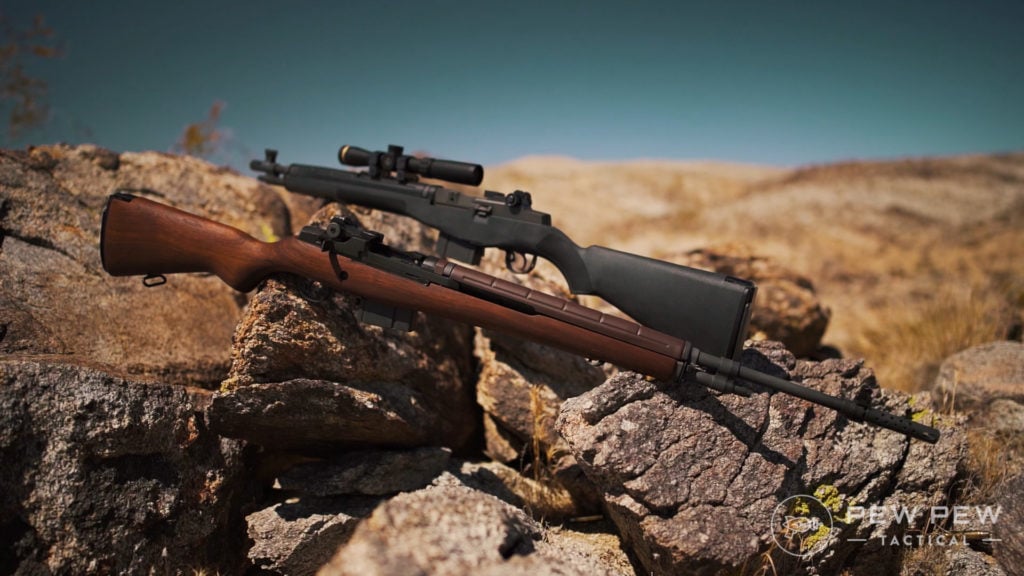
These failures led the US military to search for a more effective alternative.
We didn’t have a good time with its civilian version…the Springfield M1A. Check out what happened.
3. M16
To deal with the M14’s shortcomings, the M16 and XM16E1 was introduced in 1964.
First, there are several versions of the M16 in Vietnam — the M16 was adopted by the Airforce in small numbers, the XM16E1 was the mass issued rifle early in the war but was replaced by the M16A1 in 1967.
The XM16E1 is smaller and lighter than the M14, making it much easier to carry through the Vietnamese jungle.
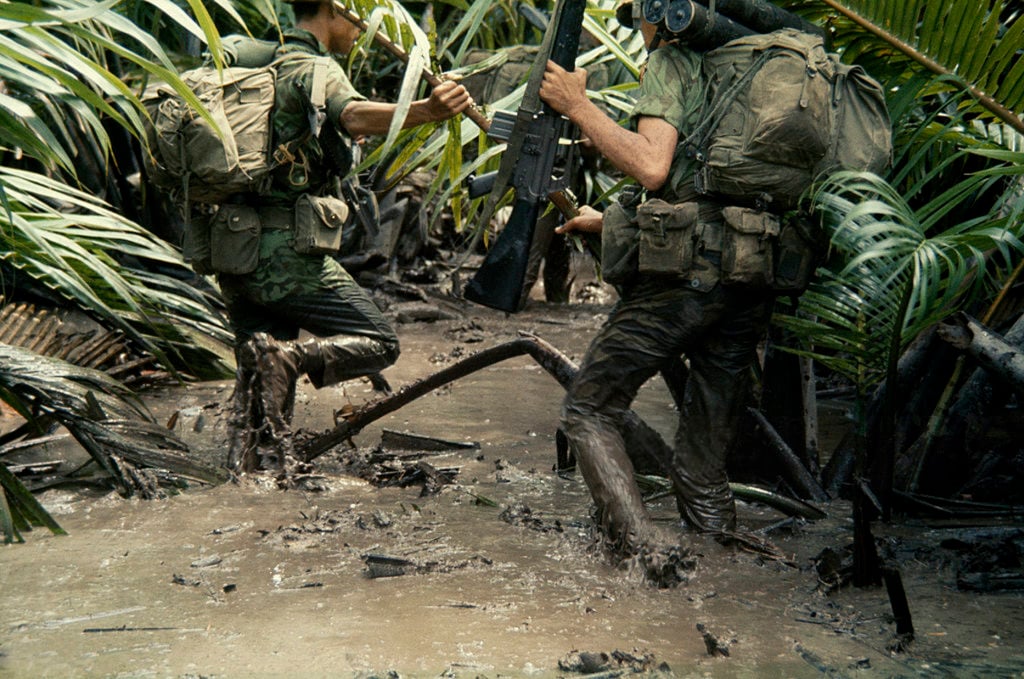
In addition, it shoots .223 Rem and later 5.56 NATO rather than 7.62 NATO, which proved more manageable in full-auto and allowed soldiers to carry more ammo.
And perfect for the American rifleman, the M16/XM16E1 was more accurate than the AK-47.
Early on, the XM16E1 had issues with malfunctions, in part due to inadequate cleaning supplies and issues with corrosion. Failure to extract malfunctions were particularly common.
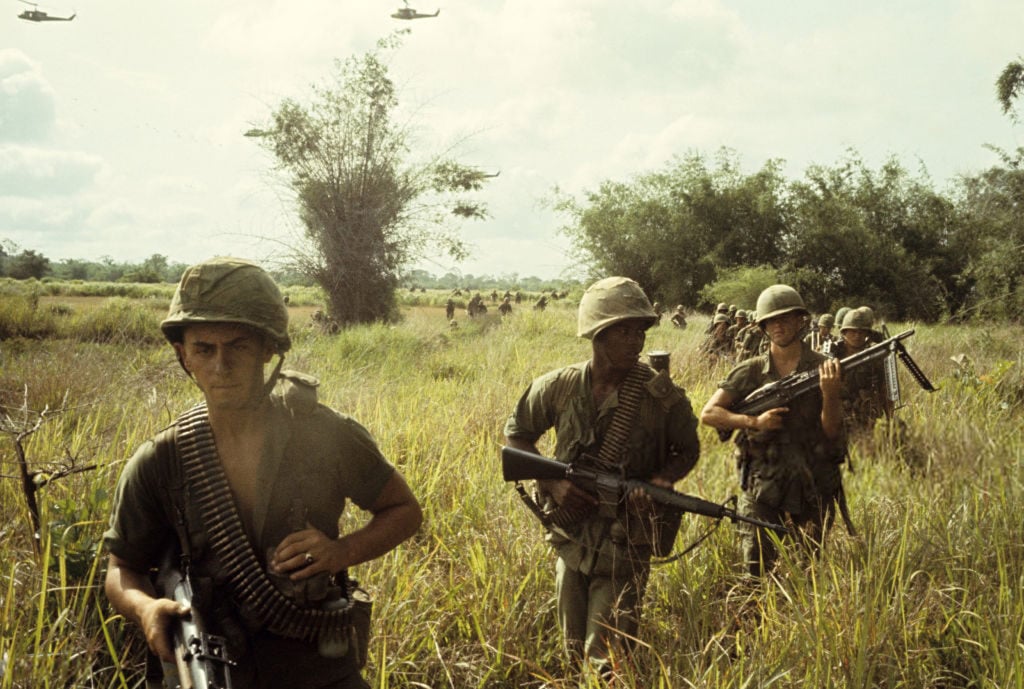
These malfunctions, unfortunately, led to numerous fatalities as US troops had to disassemble their XM16E1s to resolve malfunctions in the middle of firefights.
These were addressed with the M16A1 version and the rifle eventually gained a reputation for reliability.
The M16 family of rifles was already well liked by US troops because of its advantages over the M14, but with the upgrade in reliability, the M16 became even more loved.
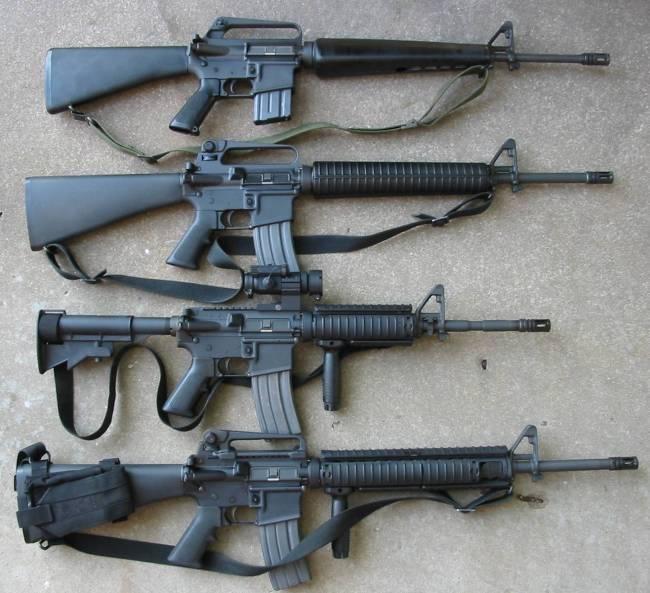
The M16 is still used by the US military to this day, though with updates and refinements, and provides the basis for the civilian AR-15.
That said — there is a LOT more to the story of the M16 in Vietnam, for a lot more details you should read How And Why The M16 Failed In Vietnam (And Is It Reliable Today?).
4. M1 Carbine
The M1 Carbine predated even the M14 and continued to be widely used by the US Military even alongside the M14 up until the adoption of the M16 in 1964.
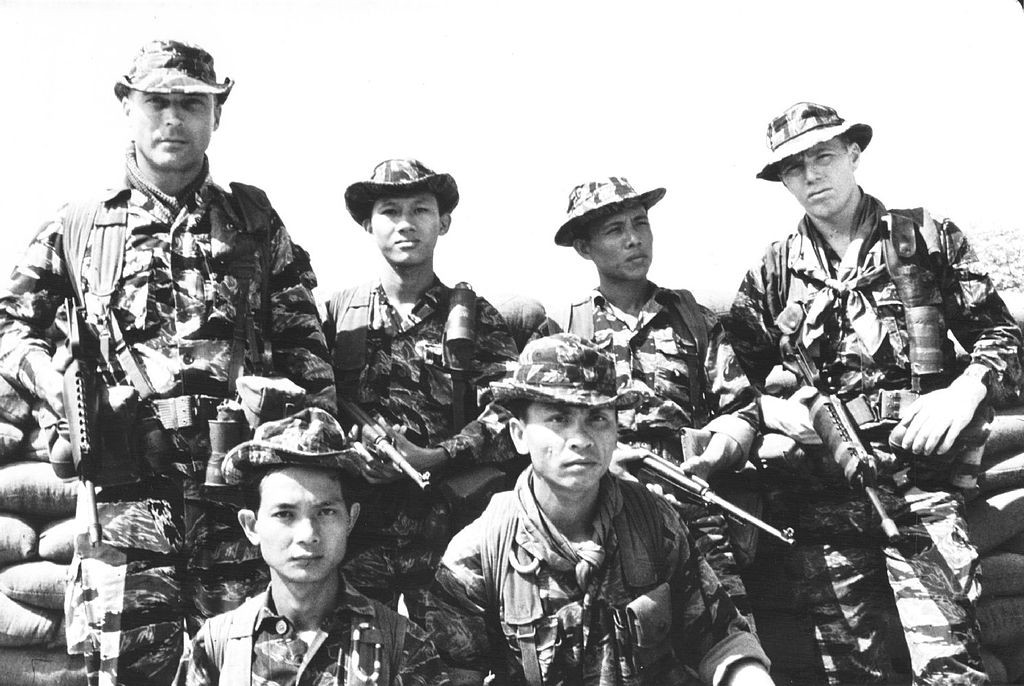
Even then, a small number of M1 carbines continued to be used until the end of the war.
The M1 Carbine, along with the M2 Carbine, was more widely used by South Vietnamese troops. The US gave almost 800,000 of these two rifles combined to the South Vietnamese throughout the length of the war.
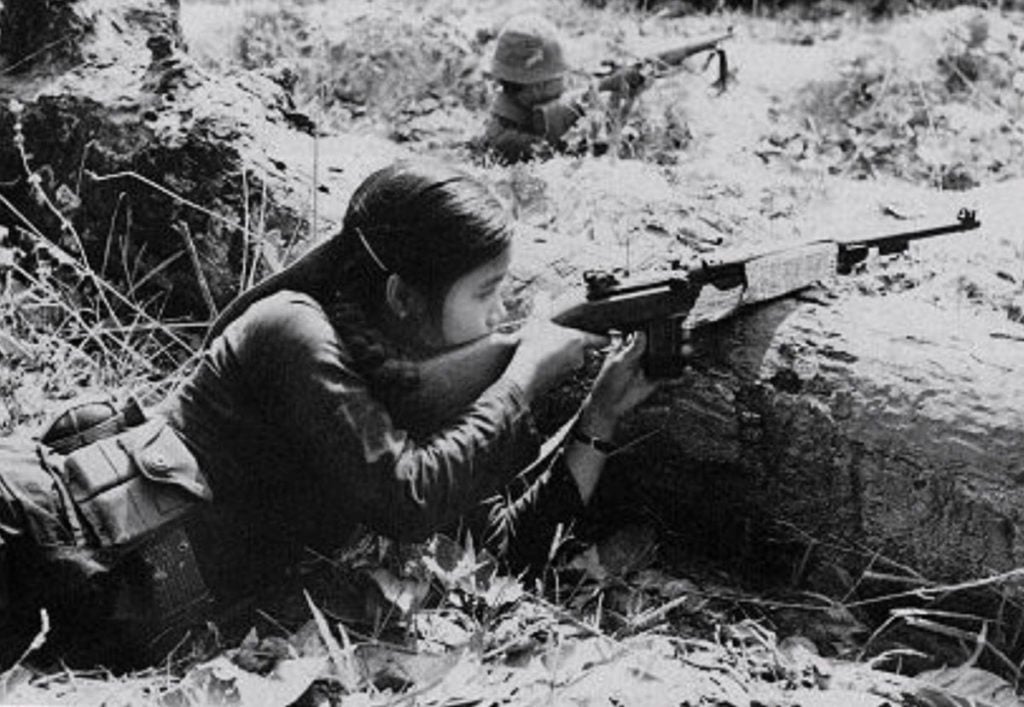
These rifles’ smaller size made them easier to handle for those small-framed troops, but they lacked power.
.30 Carbine is, very roughly speaking, about twice as powerful as 9mm. But still almost half as powerful as .30-30 Winchester.
This places it in a weird middle ground where one could argue that it is a very powerful handgun round or an underpowered rifle chartridge and both arguments would be valid.
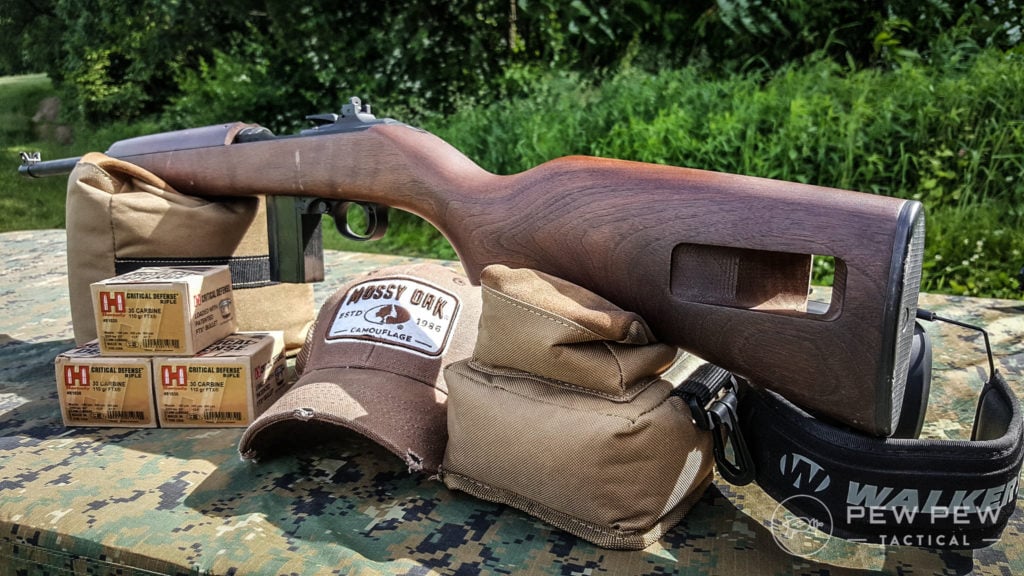
Either way, it’s probably fair to think of the M1 Carbine as a military level Pistol Caliber Carbine on steroids.
5. Colt 1911
Now let’s take a break from all this rifle talk with the Colt 1911.
First made the US military’s standard-issue sidearm in, as the name suggests, 1911, the M1911 pistol had already been around for a long time by the start of the Vietnam War.
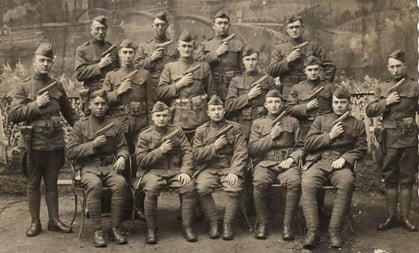
While the US military went through several types of rifles trying to find one that worked well for Vietnam, they had no such problems when it came to handguns.
The 1911 was considered highly successful after its widespread use in World War II (and to a lesser extent in World War I).
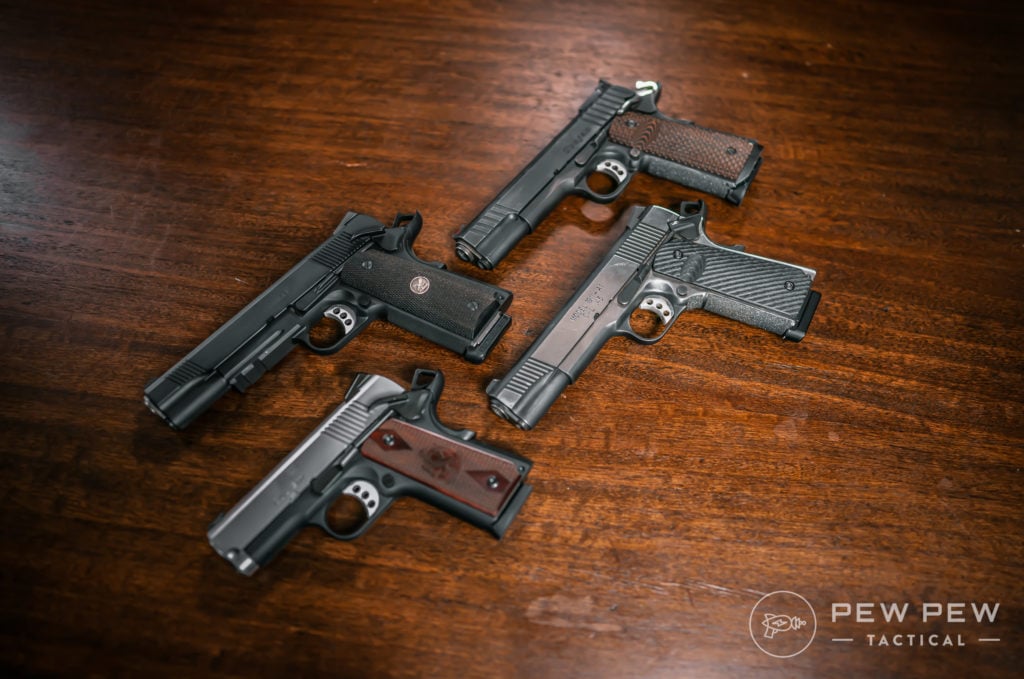
With those successes in mind, the US military’s decision-makers took a firm “if it ain’t broke, don’t fix it” approach.
The reasons that the 1911 was so popular then are pretty much the same reasons that it continues to be popular today.
The 1911 is durable, reliable, and easy to shoot and maintain. Vietnam’s wet and muddy climate proved no threat to the 1911, as the US knew it wouldn’t based on the 1911’s performance in the Pacific Theater of WWII.
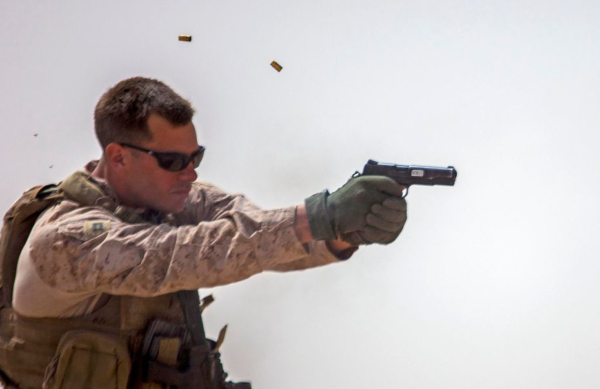
In addition, .45 ACP provides plenty of stopping power for the sort of close range combat that can quickly pop up in the jungle.
Check out our Best 1911s For The Money list.
6. M102 Howitzer
I’d be remiss to try to put together a list of Vietnam era guns and not include artillery.
Vietnam’s jungles presented some challenges for artillery, as US Army troops saw with the M101A1 howitzer. The dense foliage made it hard to spot targets or maneuver the canons for either use or deployment.
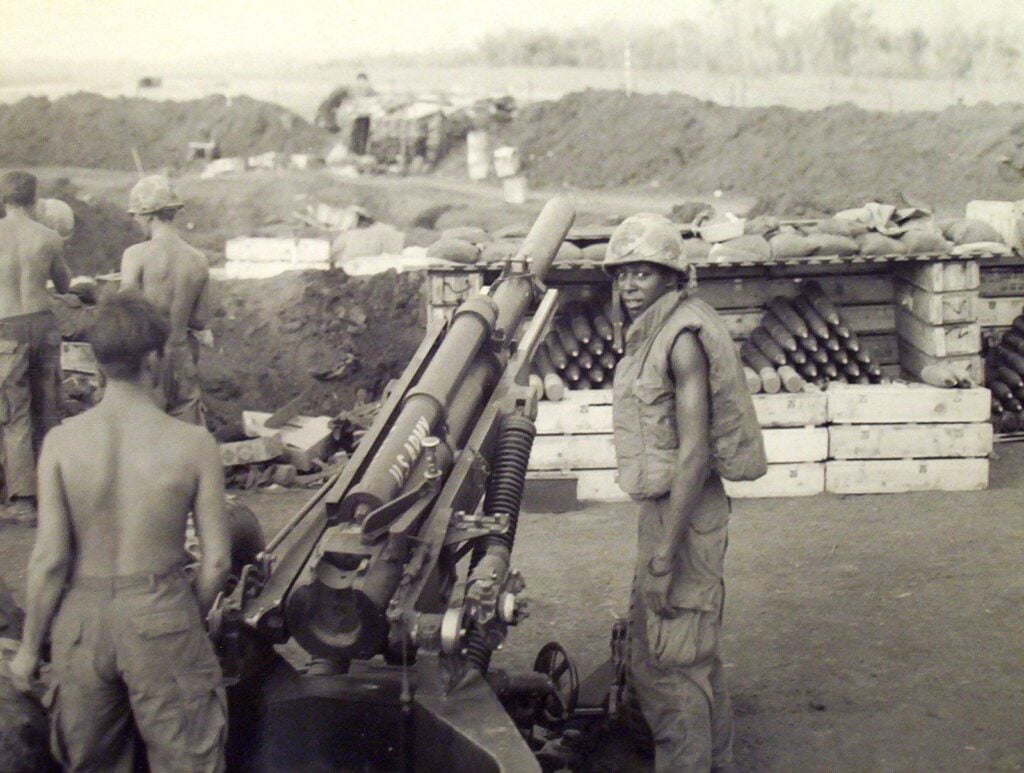
So, like with many other weapons, the US military opted to do a redesign. The M101A1 weighed almost 5,000 pounds, but the M102 howitzer was almost 1,700 pounds lighter.
The lighter weight coupled with the fact that the M102 could be broken down allowed this piece of artillery to be transported by air, usually via helicopter, to wherever it was needed.
Similar to what happened with the M16, the lightweight upgrade also allowed soldiers to carry extra ammunition.
The lower silhouette of the M102 made it harder for enemies to target the weapon, while the higher muzzle velocity allowed the M102 to hit further targets, up to 7 miles away typically and more than 9 miles away with rocket-assisted projectiles, without having to be moved again.
And speaking of minimizing movement, the gun on the M102 could rotate a complete 360 degrees around the shooting platform, eliminating the need to rotate the howitzer itself.
The Army would continue to use the M102 howitzer through the First Gulf War and then the Iraq War, though it’s since been replaced by the M119 howitzer.
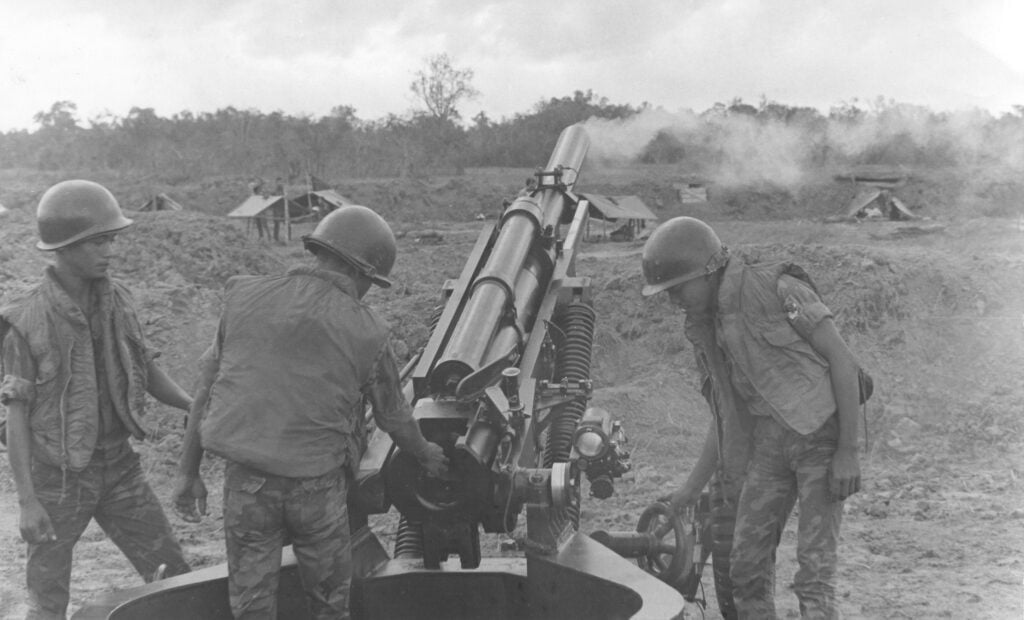
And the National Guard still uses the M102. A modified version can be found on the Air Force’s AC-130 gunship.
7. L1A1 Self-Loading Rifle
Next, let’s take a moment to talk about an iconic Vietnam Era weapon that wasn’t used by the US or the North Vietnamese.
The L1A1 Self-Loading rifle, or SLR, was the standard rifle of the Australian infantrymen and the preferred rifle of the New Zealander troops fighting in Vietnam.
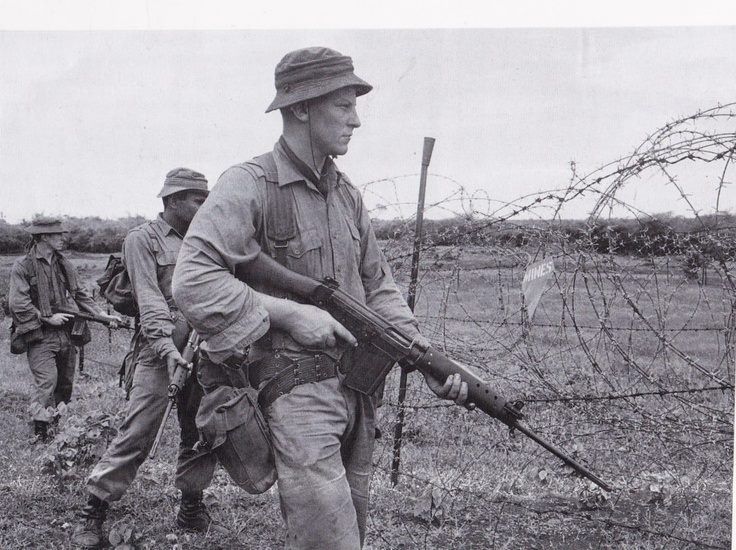
While the name L1A1 might not ring a bell for many of you, it’s easier to think of it as the British- and Australian-built version of the Belgian Fabrique Nationale’s classic self-loading rifle (SLR.
The adoption and use in some 90 countries of the FAL or FAL copies earned it the sobriquet “The Right Arm of the Free World.”
Troops of the ANZAC generally preferred the L1A1 over the M16 because they felt it was more reliable.
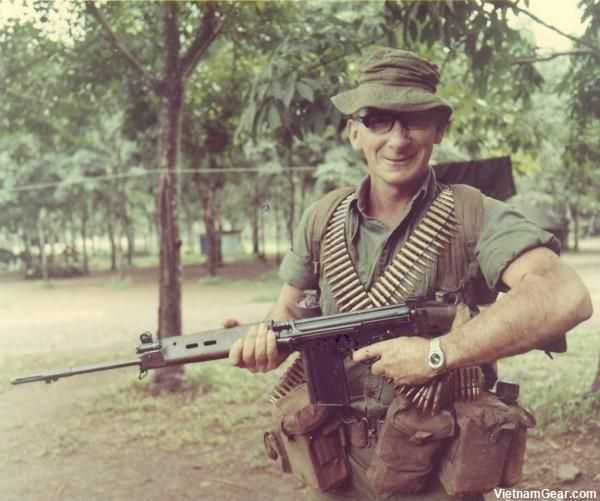
They also preferred the L1A1’s 7.62 NATO rounds over the M16’s 5.56 NATO rounds because of 7.62’s higher energy and ability to punch through foliage.
These troops had more experience than Americans with jungle warfare, considering Australia and New Zealand’s previous involvement in wars in Malaysia and the surrounding areas.
Australians, at least, were considered to be much scarier than Americans by the Viet Cong, so it’s probably safe to say that the Australians knew what they were talking about.
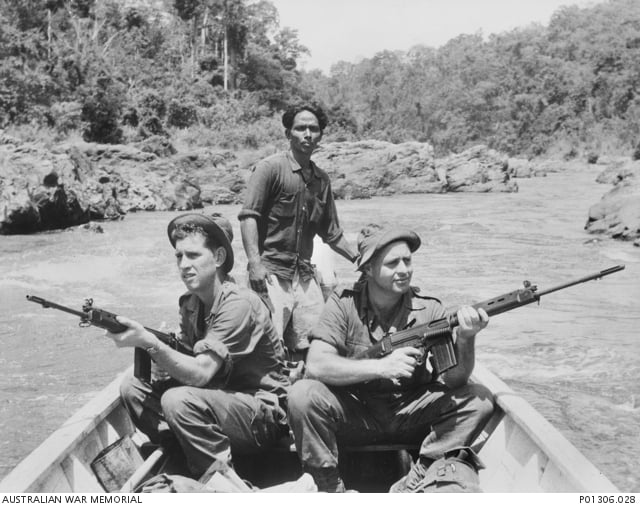
Parting Shots
Between the length of the war, the trial and error in finding the right guns, and the number and type of combatants, Vietnam saw a huge number of weapons during the war.
This list is by no means exhaustive. It just includes a few firearms that I thought were the most influential, well-known, or interesting.
And I barely touched on non-gun weapons, like the Patton 48 tank or the M-61 grenade.
You were probably already aware of at least a few of these guns, but hopefully I’ve also introduced you to a couple that you didn’t know about.
Or, at the very least, taught you a thing or two that you didn’t already know about those guns.
What’s your favorite Vietnam era firearm? If I didn’t include it on this list, why should I have? Let me know in the comments below. Need something more lighthearted, you might want to take a look at the Most Famous Movie Guns!

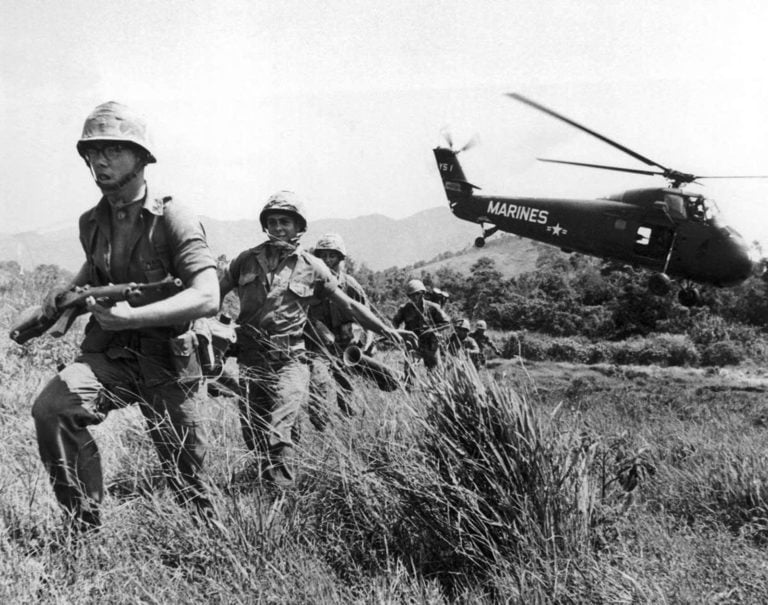







16 Leave a Reply
Enjoyed the article.
We're glad you enjoy history as much as we do, John. Thanks for reading!
Thanks for reading!
You ever think she was referring to line infantry instead of special operations units? Get your shit straight. Also, what is a "tirp" into the jungle?
My thoughts are:
M-79
M-203
China Lake pump action 40 mm granade launcher
M-60
M-2
The VC were scared shitless of Navy Seals and Force Recon Marines in Viet Nam, as much or more so than the Australians, and for good reason. My father (a force recon Marine) figured our during his first tirp into the jungle that one M60 or a good old fashioned Remington 870 shotgun, with a short barrel and 00 buckshot, were more than enough to clear the elephant grass and allow for plenty of M16 fire to hit the enemy. If you ever talked to a SEAL or Marine that was there, you would know this already. At least try to have some respect for the men and women that served in Viet Nam and get your shit straight before you speculate that the VC were more scared of Australians than Americans. It's sloppy journalism at best and revisionist history at worst.
Good info Megan.
I didn't see the M-79 Grenade Launcher. I have no photos of one, otherwise, I would send you one. Perhaps another veteran could lend you one.
Take care and thank you for making an informative presentation. Top notch!
--Geo
Was in Vietnam 68-69 and was a scout dog handler. My weapon was the Car15. Really liked the shorter length.
M79 Thumper.?? & for my "TunnelRatz" Thompson SMG. Stick, not drum.
"Hush-Puppies" S&W model 39-2 (9mm) set up with suppressors and an M1 carbine type detachable wire stock. They were called "hush puppies" by the Navy Seals because they used them to silence enemy K9's and sentries during deep incursions into N. Vietnam, Cambodia and Laos.
Went to Nam in 66,straight from Germany.had choice or M16 or m14,I had been in army for about 2 years,never even seen am M16 before,so guess what I chose
Where the sks at?
I'm totally dismayed at no mention of the M-60 machine gun.
I spent 1.5 years in Vietnam as a door gunner on UH-1B helicopters ( both slick and gun ships ) and M-60's were like my right arm.
The ONLY problems I ever encountered was with ammunition that became dusty and dirty from landing in dirty LZ's and fouling up the ammunition causing jams. But that was rare.
What? No M60? NO swedish K?
Yeah, I was going to mention the Swedish K also. And the French MAT-49. And the Soviet RPD 7.62 x 39. US Special Forces operating in Cambodia and Laos would use captured RPDs, with a cut down barrel and stock. If ambushed, the men carrying the RPD (often in addition to their M-16s) would fire a full 100 round belt of supressing fire while the rest of the team beat feet to the rally point.
SOG teams. They trained extensively with the escape tactic of run and gun. Huge amounts of fire while in a single line displacing. Devastating maneuver.
But I would have also expected the M60 to definitely be on the list!